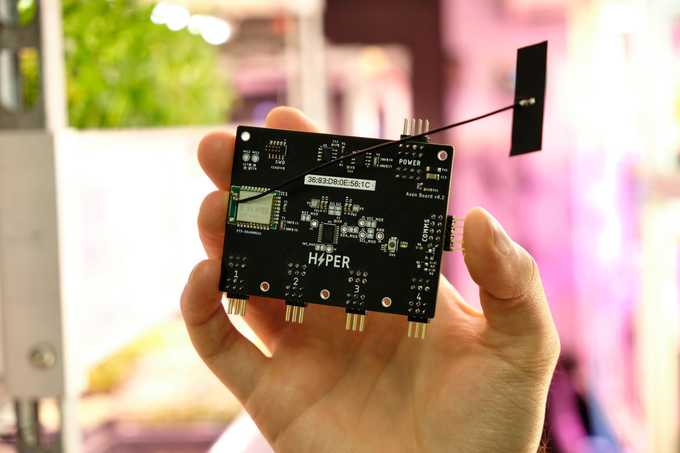Tarides & Hyper: Partners in Agricultural Innovation
by Christine Rose on Nov 18th, 2021We are thrilled to announce a partnership between Tarides and Hyper, a technology provider in the agritech space who’s building an "operating system for high-performing farms." Indoor and vertical farms are becoming tech businesses that require scalable, flexible, and easy-to-use tools to facilitate data analysis and thereby increase productivity. According to the State of Indoor Farming 2020 Report, “40% of vertical and indoor farms are implementing data analytics and control automation to increase yield and lower cost of production.”
Hyper’s product offers a developer-friendly platform for modern farms to integrate analytics and automation without worrying about hardware, scaling, or maintenance. There is a natural synergy between Hyper's product and Tarides’s mission to bring robust and scalable functional systems to the industry. Both teams will be working on technology to help solve some big problems the world faces.
First, some context about how agriculture affects our environment:
The world’s population is growing, but the size of our planet is not.
Agriculture is currently responsible for:
- 75% of the world’s deforestation1
- 50% of the world’s habitable land
- 70% of the world's freshwater withdrawals
- 26% of the greenhouse gas emissions2
It’s an important time for indoor farming, as it’s already producing twenty times (20x) more yield per area while using 95% less water and zero (0) pesticides. Plus, indoor farming will reduce the carbon footprint by cutting their food miles in half (50%)3. Vertical farming complements traditional farming by growing fresh produce for cities in a sustainable way.
Hyper's mission is to simplify the integration of sensors and controllers for data collection and automation. Their roadmap is focused on implementing real-time computation of metrics for environmental data gathered from farms, prototyping computer vision models for crop analysis, and automated crop traceability infrastructure. With their data platform, growers can optimise yield and reduce operating costs by getting access to crop growth metrics and climate automation profiles without a dedicated engineering team.
Hyper's founders are experienced engineers and OCaml hackers who have worked on IoT and data analytics products in the past in the retail, biotech, and multimedia industries. Utilizing our MirageOS ecosystem, Hyper's sensor networks and cameras are continuously collecting millions of data points across large-scale farming operations to ensure consistent crop quality, detect issues early, and automate climate control. Since the technology is offline-first, it enables Hyper to collect this data securely, without the risk of breach or loss, as is sometimes the case in cloud computing.
As a technological partner, Tarides will help Hyper build a scalable IoT platform that leverages the OCaml ecosystem. Our support will help Hyper bring the product to the market faster while also contributing to the open-source IoT ecosystem for MirageOS and related projects. Hyper’s IoT platform will be fully open-source next year and will focus on implementing better support for MQTT, CoAP, and other protocols.
A new version of MirageOS will be released in November, so this exciting announcement couldn't come at a better time! Hyper’s use of the MirageOS ecosystem to build its data intelligence product is yet another real-world example that displays the power and efficiency of MirageOS.
It’s truly exciting technology because we’re at a point in history where even the most adamant climate change critics have begun to admit the climate is indeed changing. There are things we can each do to contribute, so Tarides is proud to collaborate with a company that’s actively seeking solutions to help reduce the amount of greenhouse gas emissions while increasing productivity.
Hyper currently has production deployments in vertical and indoor farms in the UK and East Africa and is planning on scaling the operations in the coming months.

